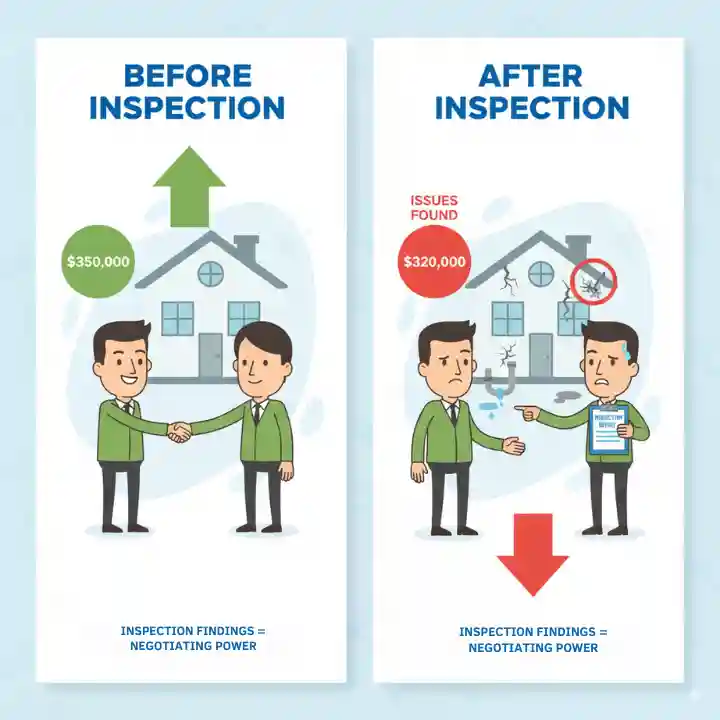How to Identify and Care for Plants – Complete Guide
Have you ever wondered why your plant is yellowing or why that succulent that seemed so resilient ended up dying?
Identifying and caring for plants can seem like a challenge at first, but with the right tools, this process becomes not only easier but also very rewarding.🌱
Don’t miss out:
In this complete guide, I will show you how to recognize different types of plants, understand what they need, and how to keep your green friends healthy and beautiful. 🌱
Fundamentals of Plant Identification
Basic Plant Anatomy
To correctly identify plants, we need to understand their main parts. Think of plants like people – each one has its own unique characteristics that make it special!
Plant Anatomy
- Roots: They are like the feet of plants, absorbing water and nutrients from the soil.
- Stem/Trunk: The body of the plant, which transports water and nutrients from the roots to the leaves.
- Leaves: The “hands” of the plant, which capture sunlight to produce energy.
- Flowers: Reproductive structures that attract pollinators.
- Fruits and Seeds: Develop after pollination, allowing the plant to reproduce.
Key Characteristics for Identification
When I try to identify an unknown plant, I always observe these elements first:
Leaf Identification Guide
- Leaf shape: Are they round, pointed, elongated, or toothed?
- Leaf arrangement: Do they grow opposite each other or alternately on the stem?
- Texture: Are the leaves soft, rough, waxy, or hairy?
- Color: Observe not only the green but also patterns or variations in the leaves.
- Size: Both of the plant and its individual parts.
I remember when I found a beautiful plant in a friend’s apartment and couldn’t figure out what it was. After observing its heart-shaped leaves and vining growth, I discovered it was a heartleaf philodendron. That “eureka” moment is one of the joys of learning to identify plants! 😊
Identification Methods
Traditional Methods:
- Plant guides and books
- Consultation with nursery staff or experienced gardeners
- Comparison with plant catalogs
Modern Methods:
- Plant identification apps (we’ll talk more about them later!)
- Gardening groups on social media
- Specialized online forums
Types of Plants and Their Unique Characteristics
The Best Plants for Beginners
Are you starting your journey to identify and care for plants? These are my top recommendations:
Top 10 Easy-to-Care-For Indoor Plants
1. Zamioculca (ZZ Plant)
Survives even in the darkest, most forgotten corner of your house!
2. Snake Plant
Practically indestructible, perfect for those who forget to water.
3. Pothos
Grows quickly and forgives watering mistakes.
4. Philodendron
Versatile and adaptable to different conditions.
Why These Plants Are Ideal to Start With
- Tolerate varied light conditions
- Forgive occasional watering oversights
- Are resistant to common pests
- Do not need frequent pruning
- Show clear signs when something is wrong
Visual Guide to Identifying Problems
How to “Read” Your Plant
Plants speak to us through visual signs. Learning to interpret these signs is essential to identify and care for plants correctly.
Plant Diagnosis System
Click on a symptom to discover possible causes and solutions:
Possible Causes:
- Overwatering (most common)
- Nutrient deficiency
- Natural aging (lower leaves)
- Sudden exposure to strong light
Solutions:
- Check the pot’s drainage
- Reduce watering frequency
- Apply a balanced fertilizer
- Remove only completely yellow leaves
Possible Causes:
- Low air humidity
- Salt buildup in the soil
- Water with chlorine or fluoride
- Exposure to drafts
Solutions:
- Increase humidity (use a humidifier or a tray with pebbles and water)
- Flush the soil to remove salt buildup
- Use filtered water or let tap water sit for 24h before watering
- Move the plant to a draft-free location
Possible Causes:
- Lack of water (most common)
- Overwatering (paradoxically)
- Transplant shock
- Extreme temperatures
Solutions:
- If the soil is dry, water thoroughly
- If the soil is soggy, let it dry out completely
- Check for signs of root rot
- Move the plant to a location with adequate temperature
Possible Causes:
- Fungal diseases
- Pests (mites, mealybugs)
- Sunburns
- Mechanical damage
Solutions:
- Isolate the plant from others to prevent contagion
- Remove and discard heavily affected leaves
- Apply specific fungicide or insecticide
- Adjust light exposure if they are burns
Basic Plant Care by Category
Water Requirements: How, When, and How Much
Watering is perhaps the most confusing part of caring for plants. Have you ever asked yourself, “Am I watering too much or too little?” You’re not alone! 🚿
Watering Guide for Different Plant Types
General tips for correct watering:
- Test the soil: Insert your finger about 2-3 cm into the soil. If it’s dry, it’s time to water.
- Observe the weight: Light pots usually indicate dry soil.
- Water deeply: Water until water comes out of the drainage holes.
- Adjust by season: Reduce watering in winter when growth slows down.
Light Requirements: Types of Light and How to Measure
Understanding Light Levels
Types of light and what they mean:
- Direct light: Sun’s rays hit the plant directly (ideal for cacti, succulents)
- Bright indirect light: Bright environment, but without direct sun (perfect for most indoor plants)
- Medium light: Moderately lit environment, but away from windows (good for philodendrons, pothos)
- Low light: Areas with minimal lighting (suitable for ZZ plants, snake plants)
How to measure light in your home:
- Observe the shadow of your hand: the more defined it is, the more intense the light
- Use light meter apps available for smartphones
- Test with a newspaper: if it’s hard to read, the light is insufficient for many plants
- Observe the time: generally, east-facing windows get morning light, west-facing afternoon light
Soil and Nutrition
The soil is not just where your plant sits – it’s its source of nutrients! ⚡
Basic types of soil:
- Indoor plant soil: Light and well-draining
- Succulent soil: Very well-draining, with sand or perlite
- Orchid soil: Special, bark-based
- Vegetable soil: Rich in organic matter
Fertilizing tips:
- Fertilize during the growing season (spring/summer)
- Use diluted fertilizer to avoid burning the roots
- Do not fertilize newly purchased or repotted plants
- Follow the manufacturer’s instructions – more is not better!
Seasonal Care
Adjustments for Spring/Summer
In spring and summer, plants enter active growth mode. It’s time to:
- Gradually increase watering frequency
- Start fertilizing regularly
- Check for new shoots and growth
- Move plants to larger pots, if necessary
- Place shade plants away from windows that receive strong summer sun
Preparing for Fall/Winter
When the days get shorter and colder:
- Gradually reduce watering
- Stop fertilizing (most plants)
- Move plants away from cold windows or drafts
- Increase indoor humidity to compensate for dry heating air
- Clean the leaves to maximize limited light absorption
Technology and Apps for Identification and Care
Plant Identifier App Analysis
The Plant Identifier is a revolutionary application that can help anyone identify and care for plants more efficiently. I analyzed this app in detail for you! 📱
Key features:
- Instant plant identification via photos
- Diagnosis of diseases and problems
- Personalized care plans for each plant
- Safety alerts for toxic plants
- Integrated light meter
- Complete plant encyclopedia
- Community of experts to answer questions
How to use for quick identification:
- Open the app and select the “Identify” option
- Take a clear photo of the plant, focusing on the leaves or flowers
- Wait for processing (usually a few seconds)
- Receive the plant’s name and detailed information about it
Click to simulate identification
Pros of Plant Identifier:
- Extremely intuitive interface
- Extensive database with thousands of species
- High accuracy in identification
- Personalized care tips
- Safety alerts for toxic plants (great for those with pets or children)
Cons of Plant Identifier:
- Some advanced features require a premium subscription
- Occasionally may confuse very similar species
- Needs an internet connection for identification
Tips to maximize results:
- Take photos with good natural lighting
- Capture different angles of the plant (leaves, flowers, stem)
- Keep the photo background clean for better identification
- Use the history feature to track growth over time
Advancing Your Knowledge
As your confidence in identifying and caring for plants grows, you can deepen your knowledge:
Resources for Further Learning
- Specialized books on botany and gardening
- Online courses and in-person workshops
- Plant enthusiast groups and forums
- Visits to botanical gardens and specialized nurseries
How to Create Your Own Care System
Develop a personalized routine:
- Create a weekly “plant day” for inspections
- Keep a plant journal to record growth and problems
- Group plants with similar needs to facilitate care
- Set reminders for less frequent tasks (like fertilizing)
Propagation and Growing New Plants
Multiplying your plants is one of the most rewarding parts of this hobby! Some simple methods:
Water propagation
Works well with pothos, philodendrons, and tradescantias
- Cut a piece of stem with at least 2-3 nodes
- Remove lower leaves leaving 1-2 nodes submerged
- Place in clean water
- Change the water weekly
- Transplant to soil when roots are 3-5 cm long
Division of clumps
Ideal for plants that form multiple stems
- Carefully remove the plant from the pot
- Shake off excess soil
- Separate the stems/roots into two or more parts
- Plant each new division in a pot with fresh substrate
- Water well and keep in indirect light for 1-2 weeks
Conclusion
Identifying and caring for plants is a continuous journey of learning and discovery. Each plant has its own personality and needs, and learning to recognize them is part of the fun! 🌿
Practical Actions to Start Today:
- Identify your existing plants using the Plant Identifier app or guides
- Create a watering schedule adapted to the specific needs of each plant
- Assess the lighting in different corners of your home
- Inspect your plants for signs of problems
- Start with an easy plant if you are a beginner
- Join an online community of plant lovers
- Keep a journal of your plant experiences
- Try propagating a plant you already have
- Read about the specific needs of your favorite plants
Remember: every plant expert was once a beginner. Even the most talented “green thumbs” have killed a few plants along the way! The secret is to observe, learn, and try again. With the right tools to identify and care for plants, you’ll be cultivating a green oasis in no time!
And you, have you started your green journey? Which plant will you identify and care for first? 🌱





